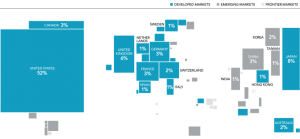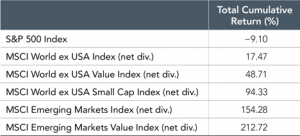Contribute to a 529 before December 31st!
 The projected costs for college can be very intimidating…but there are ways to prepare for it. Just knowing the possible sticker price gives you the power to prepare! Without preparation, your retirement plan could be significantly impacted. If you have a future student, YOU MUST START PLANNING NOW! THE DEADLINE TO CONTRIBUTE TO A 529 FOR A 2018 TAX CREDIT IS FAST APPROACHING!
The projected costs for college can be very intimidating…but there are ways to prepare for it. Just knowing the possible sticker price gives you the power to prepare! Without preparation, your retirement plan could be significantly impacted. If you have a future student, YOU MUST START PLANNING NOW! THE DEADLINE TO CONTRIBUTE TO A 529 FOR A 2018 TAX CREDIT IS FAST APPROACHING!
THE IMPORTANCE OF INVESTING NOW
To help reduce the expected costs of funding future college expenses, parents can invest in assets that are expected to grow their savings at a rate of return that outpaces inflation. By doing this, college expenses may ultimately be funded with fewer dollars saved. Because these higher rates of return come with the risk of capital loss, this approach should make use of a robust risk management framework. With a tax-deferred savings vehicle, such as a 529 plan, parents will not pay taxes on the growth of their savings, which can help lower the cost of funding future college expenses. While there are stipulations as to how the money is spent, many states will give you a tax credit for investing in a 529. Indiana, for instance, offers a 20% tax credit on your deposits up to $5,000. That is a potential for a $1000 credit on your state taxes…an immediate 20% return.
Take a look at these estimates, and the impact a 529 investment plan can have on the price tag:
Estimated Total Cost of College in 18 Years = $190,000
Est. Total Amount Paid For College if Family invests $5,000/Year from birth to Age 18 = $90,000 of Savings + $100,000 of Projected Investment Growth. That is a total of $90,000 Out Of Pocket.
VERSES…
Est. Total Amount Paid if Family saves nothing and finances the total amount = $190,000 Borrowed + $46,000 in Interest. That is a total of $236,000 out of pocket.
If your goal is to fund college for your child, a price tag difference of $146,000 (not including tax credits you can capture along the way) can derail your retirement plans. $146,000 invested over 10 years at 7% is nearly $300,000.
RISK MANAGEMENT AND DIVERSIFICATION
Just as with your retirement portfolio, it’s important to work with a trusted advisor when saving for college expenses. A professional who has a transparent, diversified approach based on sound investment principles, consistency, and trust can help investors identify an appropriate risk management strategy. When saving for college, risk management assets (e.g., bonds) can help reduce the uncertainty of the level of college expenses a portfolio can support by enrollment time. These types of investments can help one tune out short‑term noise and bring more clarity to the overall investment process. As kids get closer to college age, the right balance of assets is likely to shift from high expected return growth assets to risk management assets.
CONCLUSION
Higher education may come with a high and increasing price tag, so it makes sense to plan well in advance. There are many unknowns involved in education planning, and no “one-size-fits-all” approach can solve the problem. By having a disciplined approach toward saving and investing, however, parents can remove some of the uncertainty from the process. A trusted advisor can help parents craft a plan to address their family’s higher education goals. The deadline for a 529 tax credit is DECEMBER 31st. If you need help with this goal, contact our firm and we can guide you to the right plan.



 #10 is HERE!
#10 is HERE!


